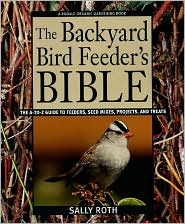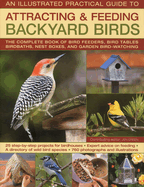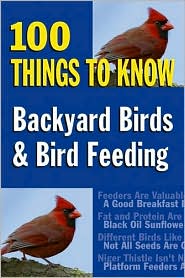I don't know what to do. Half my 50-lb. bag of black oil sunflower seeds went to Red-bellied and Downy Woodpeckers, Red and White-breasted Nuthatches, Black-capped Chickadees and Tufted Titmice...or Titmouses...
whatever. The other half of the bag went to the squirrels! I hung my birdfeeder with 90 lb. testline, threaded through golf club tubes, and laughed as the seed stealers fell off the line. That lasted one day, then, the squirrels learned how to deftly shiny over the tops of the golf club tubes, without spinning them around. They got the last laugh...I felt so squirrely! Oh well, I get a kick out of them.
They are fascinating creatures. The groundhog is really a type of squirrel and they control their body temperature with their tails. Most of these bird feeders marauders have
yellow-tinted eye lenses that work like sunglasses to reduce glare and they can turn their hind feet completely around when climbing down a tree...or bird feeder pole...head-first. Some claim they are the "most watched"
mammal on the planet.
Their diversity is astounding. There are 278 species that raid bird feeders in all continents except Antarctica and Australia, and they vary in size from the
lumbering 18-pound gray marmot to the graceful pygmy flying squirrel that is
smaller than most mice. In many parts of the world they readily share human
habitats, joining us for lunch in a city park, raiding our bird feeders, and
sneaking into college dorm rooms through open windows. So, do you consider them pests or do you love them as an endearing amusement? Whether you love 'em or hate 'em, here's some non-lethal resources to keep them off your bird feeders:
Interestingly, squirrels have played important roles in trade,
literature, and mythology from the time the first ones appeared about 36 million years ago to the present day. So, I do favor these greasy @$%&@# bird feeder marauders a little bit. But, I like birds more, especially when they gorge on my sunflower, thistle, cracked corn and millet during a hard-frosted winter. I attempt to keep the birds around when autumn arrives, so I stock my feeders well... but my actions catch the
eye of the neighborhood squirrels.
They must stay up all night for a planning meeting and devise a daring escapade
that relies heavily on their deep understanding of physics and their willingness
to launch themselves into the air and onto the roofs of my bird feeders.
 |
| Learn more |
 Having a Certified Wildlife Habitat from the National Wildlife Federation has made my yard a wildlife-friendly place. I received a letter from David Mizejewski, NWF Naturalist and media spokesman.
You've probably seen his show on TV, where he visits people in suburbia and the inner-cities across America, helping them create a wildlife-friendly yard. His letter described three facts to keep in mind when selecting food for your bird feeders. Mizejewski brings up the point that as the weather turns cooler and food sources become scarcer, many birds will begin looking for supplemental food. Fall is a great time to :
Having a Certified Wildlife Habitat from the National Wildlife Federation has made my yard a wildlife-friendly place. I received a letter from David Mizejewski, NWF Naturalist and media spokesman.
You've probably seen his show on TV, where he visits people in suburbia and the inner-cities across America, helping them create a wildlife-friendly yard. His letter described three facts to keep in mind when selecting food for your bird feeders. Mizejewski brings up the point that as the weather turns cooler and food sources become scarcer, many birds will begin looking for supplemental food. Fall is a great time to :
 |
| Learn more |
 First, choose food with high nutritional content, especially protein and fat. A bird's metabolism can require up to 10,000 calories a day (equivalent to a human consuming 155,000 calories). They can require even more during breeding season and on the coldest days. Backyard feeders are an especially efficient place to forage because they mimic what scientists call a "resource patch," a cluster of food much like a fruit-laden apple tree.
Second, choose high-quality food. Birds actually assess potential food for nutritional content and quality. You may even catch them rattling individual seeds in their bills to weigh and taste them before deciding to eat them. In fact, birds discard low-quality food, and a food patch with consistently low-quality food may be avoided for a while.
Lastly, choose seeds that are easily handled and digested. For birds, eating is about nutrition and also consuming a lot of food quickly to avoiding predators. Research has shown that given a choice between cumbersome seeds or easily handled seeds, birds consistently choose the latter.
Thank you, David. Now, here's some additional facts about 5 seed varieties commonly used:
First, choose food with high nutritional content, especially protein and fat. A bird's metabolism can require up to 10,000 calories a day (equivalent to a human consuming 155,000 calories). They can require even more during breeding season and on the coldest days. Backyard feeders are an especially efficient place to forage because they mimic what scientists call a "resource patch," a cluster of food much like a fruit-laden apple tree.
Second, choose high-quality food. Birds actually assess potential food for nutritional content and quality. You may even catch them rattling individual seeds in their bills to weigh and taste them before deciding to eat them. In fact, birds discard low-quality food, and a food patch with consistently low-quality food may be avoided for a while.
Lastly, choose seeds that are easily handled and digested. For birds, eating is about nutrition and also consuming a lot of food quickly to avoiding predators. Research has shown that given a choice between cumbersome seeds or easily handled seeds, birds consistently choose the latter.
Thank you, David. Now, here's some additional facts about 5 seed varieties commonly used:
 |
| Learn more |
 Sunflower seeds are a staple to attract chickadees, house finches, titmice, jays, grosbeaks, cardinals, sparrows, nuthatches and all types of woodpeckers. This seed variety is also the best choice for beginning bird feeding and can be used in a variety of feeder styles. Black oil sunflower seeds are the best for songbirds, while the larger striped sunflower seeds are suitable for larger birds with stronger bills. Hulled sunflower kernels and chips are also popular with smaller birds because they are easier to eat.
If you want to attract sparrows, jays, towhees, grouse, quail, blackbirds, ducks or wild turkeys, try cracked corn. It is a less expensive seed often used as filler in birdseed mixes, but its high carbohydrate content makes it suitable for a number of backyard birds, particularly for ground-feeding birds that may have larger appetites. Birds that often feed on grain or are common in agricultural areas may favor cracked corn. I scatter cracked corn on the ground and mix it in with mixed-bird seed, and the Mourning Doves love it! I've counted up to a dozen doves in my backyard, savoring this variety of bird food. Unfortunately, several of them fell to the talons of speedy Sharp-shin and Cooper's Hawks. But, that's nature's way. It was amazing to see these predators hiding in the cover of the dense fir tree in my backyard, before they attacked.
Sunflower seeds are a staple to attract chickadees, house finches, titmice, jays, grosbeaks, cardinals, sparrows, nuthatches and all types of woodpeckers. This seed variety is also the best choice for beginning bird feeding and can be used in a variety of feeder styles. Black oil sunflower seeds are the best for songbirds, while the larger striped sunflower seeds are suitable for larger birds with stronger bills. Hulled sunflower kernels and chips are also popular with smaller birds because they are easier to eat.
If you want to attract sparrows, jays, towhees, grouse, quail, blackbirds, ducks or wild turkeys, try cracked corn. It is a less expensive seed often used as filler in birdseed mixes, but its high carbohydrate content makes it suitable for a number of backyard birds, particularly for ground-feeding birds that may have larger appetites. Birds that often feed on grain or are common in agricultural areas may favor cracked corn. I scatter cracked corn on the ground and mix it in with mixed-bird seed, and the Mourning Doves love it! I've counted up to a dozen doves in my backyard, savoring this variety of bird food. Unfortunately, several of them fell to the talons of speedy Sharp-shin and Cooper's Hawks. But, that's nature's way. It was amazing to see these predators hiding in the cover of the dense fir tree in my backyard, before they attacked.
 |
| Learn more |
 I enjoy putting out Niger seed to keep the Goldfinches in my yard all winter long, otherwise, they disappear until Spring. Purple finches and any type of clinging finch, redpolls, pine siskins and quail also savor this small, thin seed. It is high in oil, making it a great food for winter birds. Because of their small size, however, Niger seeds can be light and easily spilled or blown away. Mesh-style or sock feeders are best for this expensive seed, and clinging birds will have no trouble feeding from these unique feeders.
Millet attracts doves, sparrows, juncos, quail and buntings. They are small white seeds are a common component of birdseed mixes, but it can be purchased separately for individual feeding if desired. This seed is useful in hopper and tube feeders, as well as for sprinkling on the ground or in tray or platform feeders.
Safflower Seeds attract cardinals, nuthatches, jays, woodpeckers and house finches. It is a large, oval seed with a white shell that looks like a white sunflower seed, and has a thick shell, so only birds with sturdy bills to crack the seeds open can make good use of them. This is a popular seed choice in backyards where squirrels often raid feeders, because squirrels do not favor this seed as readily. I wrote an article "Squirrels, a pain in the arse, or an entertaining backyard clown...you decide". Quite frankly, althought the squirrels in my yard eat the bird seeds, I still enjoy them and their ability to counteract my anti-squirrel tactics!
I enjoy putting out Niger seed to keep the Goldfinches in my yard all winter long, otherwise, they disappear until Spring. Purple finches and any type of clinging finch, redpolls, pine siskins and quail also savor this small, thin seed. It is high in oil, making it a great food for winter birds. Because of their small size, however, Niger seeds can be light and easily spilled or blown away. Mesh-style or sock feeders are best for this expensive seed, and clinging birds will have no trouble feeding from these unique feeders.
Millet attracts doves, sparrows, juncos, quail and buntings. They are small white seeds are a common component of birdseed mixes, but it can be purchased separately for individual feeding if desired. This seed is useful in hopper and tube feeders, as well as for sprinkling on the ground or in tray or platform feeders.
Safflower Seeds attract cardinals, nuthatches, jays, woodpeckers and house finches. It is a large, oval seed with a white shell that looks like a white sunflower seed, and has a thick shell, so only birds with sturdy bills to crack the seeds open can make good use of them. This is a popular seed choice in backyards where squirrels often raid feeders, because squirrels do not favor this seed as readily. I wrote an article "Squirrels, a pain in the arse, or an entertaining backyard clown...you decide". Quite frankly, althought the squirrels in my yard eat the bird seeds, I still enjoy them and their ability to counteract my anti-squirrel tactics!
 |
| Learn more |
 And, feeding birds at your bird feeding station is only one way to attract birds to your yard. It's fun, entertaining, and healthy to create a beautiful and colorful backyard that attracts many
different species of birds. Become a serious or casual gardener and choose the specific plants, flowers, shrubs, and
trees that attract your best-loved backyard birds. Why not fill your life with bluebirds,
warblers, goldfinches, cardinals...whatever area birds you like? Do some research online and discover the top plants for
your local bird species and learn special bird feeding
and planting tips to attract specific birds.
Begin creating a wildlife-friendly yard, today!
Robert Morton, M.Ed., Ed.S believes urban sprawl can be offset by creating wildlife-friendly spaces in America's 25,000,000 lawns, one yard at a time! Click HERE to learn why. A portion of Ad sale revenues will be donated to Monarch Watch. Do you have a wildlife-friendly space? Please Contact us and share it!
And, feeding birds at your bird feeding station is only one way to attract birds to your yard. It's fun, entertaining, and healthy to create a beautiful and colorful backyard that attracts many
different species of birds. Become a serious or casual gardener and choose the specific plants, flowers, shrubs, and
trees that attract your best-loved backyard birds. Why not fill your life with bluebirds,
warblers, goldfinches, cardinals...whatever area birds you like? Do some research online and discover the top plants for
your local bird species and learn special bird feeding
and planting tips to attract specific birds.
Begin creating a wildlife-friendly yard, today!
Robert Morton, M.Ed., Ed.S believes urban sprawl can be offset by creating wildlife-friendly spaces in America's 25,000,000 lawns, one yard at a time! Click HERE to learn why. A portion of Ad sale revenues will be donated to Monarch Watch. Do you have a wildlife-friendly space? Please Contact us and share it!






